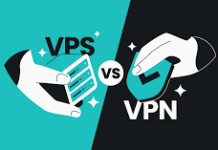Human resource management is one of the most critical aspects of any business. Companies have long realized the importance of maintaining a clear system for managing their employees. But, the increasing challenges and competition in talent acquisition demand that organizations set up a somewhat optimized human management system as early as possible to identify and retain valuable employees.
For several years now, HR and payroll have been handled individually despite their inherent correlation. While human resource departments have been responsible for identifying, selecting, and onboarding new talents, the responsibility of the paycheck process generally went to the finance or accounting team. But streamlining the payroll process to work hand in hand with HR is necessary to ensure seamless functioning of employee-related matters within any organization.
Payroll integration systems are the way to go about performing this task. These solutions synchronize the data between the HRIS and payroll setups in the organization to offer a one-stop solution for all employee-related data. There are several advantages for any organization to investing in payroll integration solutions. Let us briefly discuss a few compelling reasons among them.
1. Good Bye To Paperwork
Organizations have long evolved from relying on extensive paperwork for critical functions. It optimizes the company’s operations, reducing the burden on different departments. But paperwork remains essential for companies having separate HR and payroll departments. Events such as a promotion require extensive paperwork flying between the two departments to ensure proper remuneration. A payroll integration system can quickly eliminate the hassle of it all.
A single interface for the entire organization to access helps quickly retrieve relevant information about any employee. The HR team can immediately update the change in the employee’s designation, and the respective change in remuneration is instantly accessible to the finance team, negating the need for drowning in endless paperwork for critical tasks. Also, eliminating routine work such as data entry can help them focus on other necessary tasks.
2. Say Yes to Efficiency
Companies utilize several different applications simultaneously to support various parts of their operations. Employee information may be required in each of these systems. For example, the payroll team may need to input the same information into a CRM, an accounting software, a payroll processing software. This type of repetition is a waste of resources for any organization. An integrated payroll system ensures one common place for registering employee information. All teams can access relevant information from here and work more closely, thus engaging effectively in managing human capital properly. It can save time and quickly remove inefficiencies in human management for the best results.
3. Choose Accuracy
Human interference introduces a factor of error in any task. The occasional inconsistencies and mistakes that arise from paperwork and multiple people handling information are inevitable. But these errors can cost an organization a lot of time and money and further increase the risks of liabilities. Integration is an excellent way to reduce basic errors in the payroll system. It can help avoid common issues such as double entry and provide a straightforward way to manage employees.
4. Cut Down Enquiries
Integrated payroll systems are an elegant way of reducing the need for unnecessary inquiries from employees to the various departments. Employees may often require access to information such as remuneration, payslips, EPF, tax filings, allowances, or holiday days. Having to send across a query for every bit of information can cause delays. It can also keep the departments from focusing on other tasks. Integration supports self-service features to employees that enable them to access personal information quickly without interference from any department. Their doubts and questions can be resolved immediately without the long wait for replies from different teams.
5. Strengthens Reporting
Data analytics has become a driving force behind optimizing the operations in any organization. The leadership of any company relies on quality insights derived from employee information to understand inefficiency in the system, recognize problems that could lead to challenges such as low employee retention, and elevate overall productivity. Such number crunching and analytics reporting require a centralized system that correlates the input from different departments about an employee to build a robust data set. Payroll integration can provide the opportunity for such a sophisticated network of data, thus making it a valuable resource.
6. Saves Resources
Maintaining large teams to support manual data entry can wreck havoc on the operational costs of an organization. Employing multiple people whose ultimate responsibility is to register the same data is counterproductive. These tedious admirative tasks are best handled by software that can automate several processes and perform the tasks in much less time. You will now have to dedicate fewer company resources to conduct the same process with improved efficiency.
Resource savings also include avoiding unnecessary expenses such as fines or other financial and legal liabilities caused by compliance-related challenges. A centralized payroll system can ensure you stay compliant with the various requirements of administrative bodies. From supporting easy regular reporting to minimizing errors, you can remain compliant with the regulations without dedicating additional resources using these solutions.
Conclusion
Creating the appropriate infrastructure for human management in companies is critical to ensure that you retain valuable talents. Payroll integration systems can be an effective way to ensure this as it serves as the bridge between HR and payroll, thus eliminating duplicate data filing and wastage of resources while creating a seamless experience for both the employee and the various teams. Explore the different payroll integration systems available in the market to choose the best solutions for your organization.



